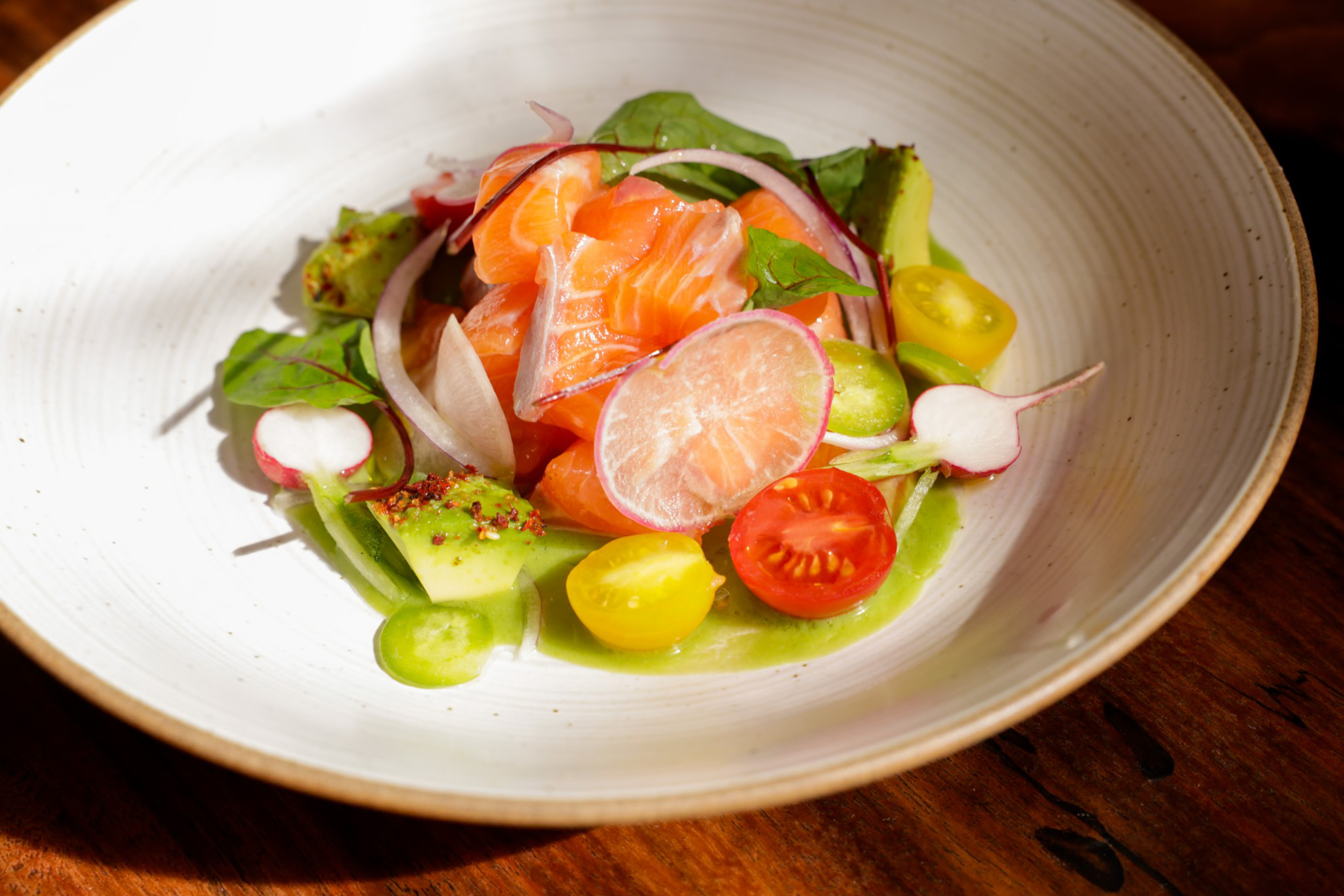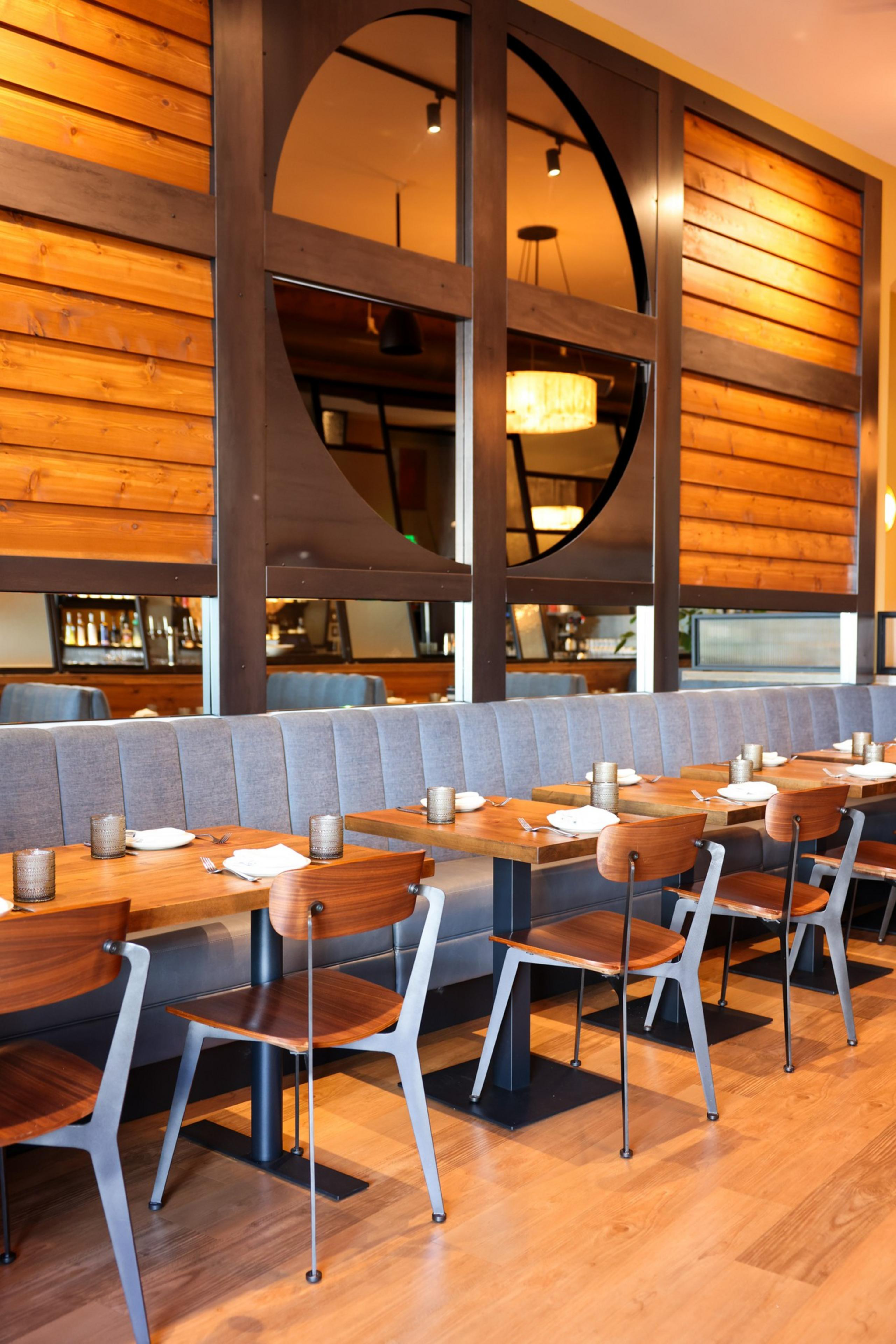In Eat Here Now, we serve up the newest, the buzziest, or simply the rediscovered in SF food. If you can pick only one place to eat at this week — go here.
A simple sign hangs above the doorway at 1775 Fulton St., with one word written in curling, silver letters: Altamirano. The name might not ring any bells. But it should, because it’s the eighth Bay Area restaurant from Carlos Altamirano, San Francisco’s Peruvian food king.
For a chef who has been opening restaurants for 20 years and operates three others in the city — Mochica, Piqueos, and Sanguchon — Altamarino is incredibly modest. He exudes an air of tranquility. With his name attached, though, this latest project is his most personal and ambitious. “This one feels different,” he says. “I feel proud. This is me.”
Yes, the month-old NoPa neighborhood restaurant serves Peruvian food. But unlike SoMa’s Mochica, the chef’s first restaurant, and the Mission counter-service spot Sanguchon, Altamirano puts a spin on traditional dishes, embracing local ingredients and bold flavors, no holds barred. The chef blends classic Peruvian ingredients like aji amarillo peppers and large-kerneled choclo corn with global ones like Parmesan foam, oyster sauce, and edamame — a leveling-up of the fine-dining touch he brought to the Half Moon Bay restaurant La Costanera, which earned him a Michelin star in 2012 and 2013. “I said, ‘Let’s kick it up a notch with this one,’” Altamirano says with a smile.

Case in point: For a show-stopping experience, order the Sophi sashimi ($23). The staff delivers ruby-red slices of tuna tataki under a dome full of smoke, which billows across the table after being released, but not before imbuing the fish with its delicate essence, balancing out the zippy passion-fruit leche de tigre. That bright, citrus-based marinade, which translates to “tiger’s milk,” is normally used to cure fish but appears all over the menu — though Altamirano shirks tradition, infusing it with everything from rocoto peppers and mango to jalapeño and lemongrass.
Though the menu isn’t specifically Nikkei, a fusion of Japanese and Peruvian cuisines (opens in new tab), you can taste and see its influence. A duo of lobster black bao ($18), colored with squid ink, feels like a steal considering the obsidian buns can barely contain the abundance of yuzu- and ginger-infused lobster meat. Topped with togarashi, pickled cucumber, and daikon, plus curly ribbons of scallion, the bao would be at home in a Japanese restaurant. But each bite was so satisfying, that provenance hardly mattered. Meanwhile, Altamirano’s take on pulpo anticuchero, which starred a single tentacle that’d been confited till buttery and soft, and a light pesto quinoa salad sprinkled with toasted pine nuts and crumbles of feta lent a Mediterranean flair.


Altamirano, the restaurant, falls somewhere between the chef’s neighborhood spots and his Michelin-worthy gem. Settling into a booth in the wood-wrapped dining room feels as comfortable as kicking back at a friend’s elegant home. Large pieces of driftwood and reclaimed furniture give a sense of natural beauty, though the best seats in the house aren’t indoors. Out back there’s a stunning covered patio with a separate bar and long fire pit surrounded by low stools. The chef hopes the hidden outdoor space will play host to live music during weekend brunch, when the menu offers dishes like purple corn waffles and chimichurri-topped steak and eggs.
The chef isn’t ready to rule out plans to continue expanding his restaurant empire. “We’re not done yet,” he says. “We’ll see.”
As for a name, he’s got something in mind: He’d like to dedicate a place to Sophie, his daughter.
Altamirano
